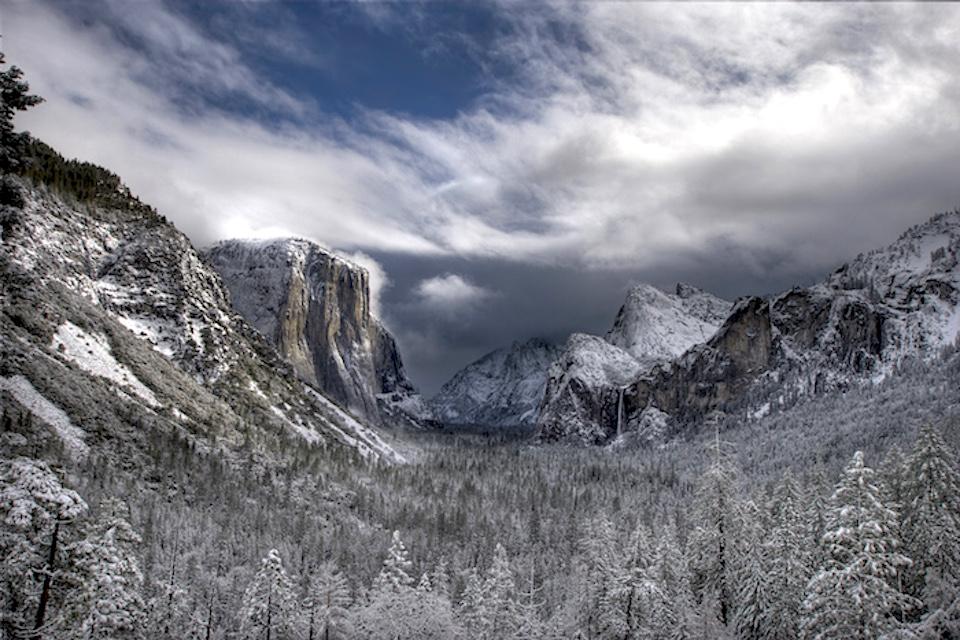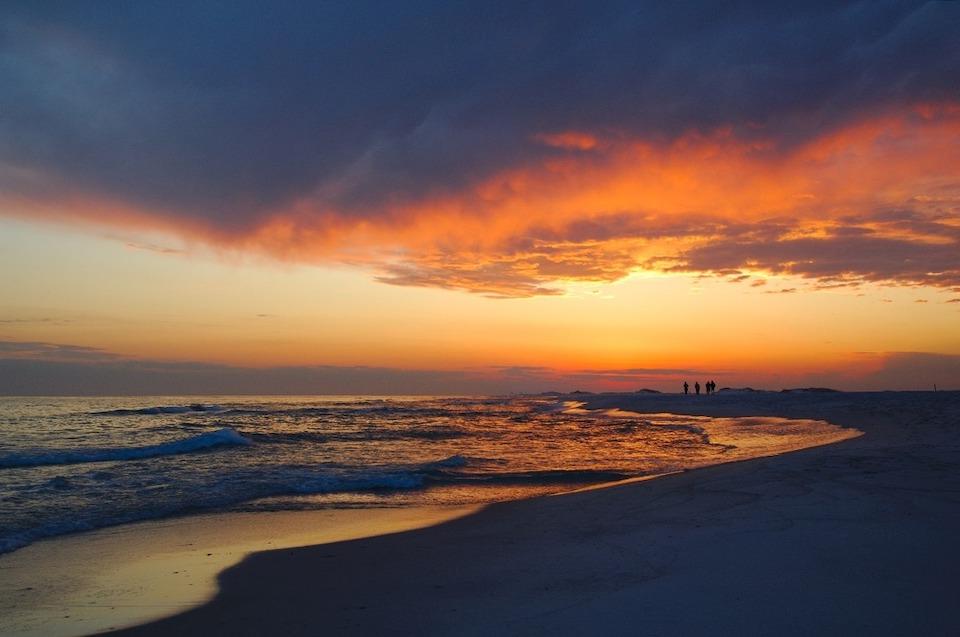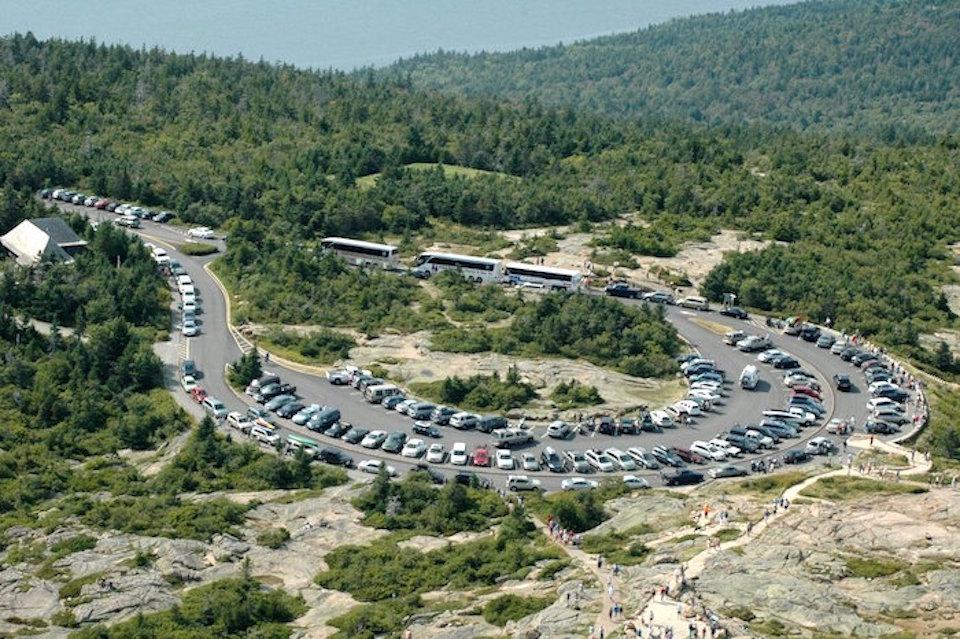
With the partial government shutdown lifted, for a while at least, parks are getting back to normal and gateway communities are looking to make up for loss revenues/NPS
Editor's note: While the budget stalemate that left national parks with only skeleton staffs the past five weeks was lifted, temporarily at least, Friday night, the impacts of the partial government shutdown were felt in different ways across the country. The following story was compiled via dispatches from Rita Beamish, Erika Zambello, and Dolores Kong and Dan Ring.
Yosemite National Park Was Open, But Tourists Stayed Away
By Rita Beamish
Since Gold Rush times, Priest Station has perched atop what’s now Old Priest Grade, a tortuously steep road twisting up the route to Yosemite National Park.
Burned and rebuilt over time – miners’ store to stagecoach stop and hotel -- it’s now a café with two rental cabins and American menu, an establishment not likely to buckle to a government funding battle that curtailed, but did not close the nearby tourist mecca. Still, says owner Steve Anker, the Priest Station Café, dependent on Yosemite tourists for 80 percent of its business, took a hit during the 35-day government shutdown that now has entered a three-week remission, with uncertain prognosis after that.
“Normally I’d have two more people working” in the 100-seat eatery, said Anker, a sixth-generation descendant of the Priest family owners, after staffing the lunch shift alone last week. People still go to Yosemite, which was reported bustling over the holidays with the lure of unstaffed, and thus free, entrance gates. But by last week, Anker said, “There’s just not as much traffic” amid a sense of uncertainty.
Even businesses not feeling a pinch were anxious -- not surprising since Yosemite’s 4.4 million visitors in 2017 spent $452 million, according to the National Park Service, in so-called gateway communities near the park, such as Big Oak Flat where Priest Station is located, and the Old West town of Groveland up the road -- where Groveland Hotel owner Douglas Edwards said, “We’re definitely down for this time of year, probably 30 percent.”
Martin Luther King weekend occupancy was off by two-thirds, said Edwards, and he closed the hotel restaurant, laying off eight people, and put a renovation on hold. “That’s $12,000 to $20,000 we just can’t spend right now.”
The lure of free entrance to Yosemite still drew people, but “it’s way less than it would be,” due at least partly to negative press about gross trash in Yosemite early in the shutdown and confusion about what park services were available.
The Mar-Val’s grocery story has undergone an expansion, remodel and addition of a bakery and deli since last winter; and store manager Matthew Davidson estimated the store in recent weeks only realized about half the 20 percent uptick in business that he anticipated.
Yosemite visitor spending affects thousands of local jobs and ripples through an economy hard hit over two years by devastating floods that drowned parts of the park and wreaked havoc in Sierra towns, and by furious wildfires that kept tourists away.
“They were already impacted two years in a row,” and many businesses now are running with little or no reserve, said Jonathan Farrington, executive director of Yosemite Mariposa County Tourism Bureau. For that reason, the fact that Yosemite remained open, even without full services but with concessionaires running, was a lifesaver in the rural county where tourism is the main industry, even as people worried about long-term economic impacts, he said.
Traveler uncertainty appeared to affect summer bookings in the gateways.
The 143-room Rush Creek Lodge at Yosemite had large-group reservations that helped steady it during the government’s partial shutdown, “though we are seeing lot of hesitation in the market,” said spokesperson Teri Marshall. “People are slower to book this year and summer is not where it normally would be.”
At the much smaller All Seasons Groveland Inn, owner Tammy D’Antonio said, “It’s our slow season but I notice it’s a little slower.”
Terri Wemmer said the gas station and store, Miner’s Mart in Big Oat Flat, had normal business during the shutdown -- possibly because more visitors came up for a free day in Yosemite from cities within range -- but she added, “I’m worried about other businesses in town.”
Locals were determined to make a non-issue of the trash overflow that muted the appeal of spectacular Yosemite early in the shutdown. They took it upon themselves -- businesses and organizations working to install and pay for portable toilets and collect garbage. Miner’s Mart dispensed large trash bags to parkgoers who stopped to gas-up enroute, and offered drop off for the bags on the way out, as did other local groups. When Farrington went with a clean-up group to Yosemite Valley on Jan. 10, they found almost no trash to collect.
Marshall at Rush Creek summed up the local vibe: “We’re all very optimistic and focused on whatever it takes to make Yosemite stay open.”

The temporary closure of the campground at Fort Pickens at Gulf Islands National Seashore benefited nearby communities, as campers turned to them/NPS
Closure Of National Seashore Campgrounds Helped Neighboring Communities
By Erika Zambello
Florida is home to two of the seven national seashores in the National Park System, and they are affected differently than traditional parks with road access. Because both Gulf Islands National Seashore in northwest Florida and Canaveral National Seashore in east-central Florida have miles of beach facing the water, it’s difficult if not impossible to completely shut the park off to visitors. While campgrounds and guest facilities may be closed, locals and tourists can still access the shoreline via boat, or by biking or walking around the closed gates.
At Gulf Islands National Seashore on the Mississippi-Florida coastline, the main road providing access to the barrier island between Navarre and Pensacola Beach remained open, so the beach on both the Sound and the Gulf of Mexico side were readily accessible. Because of this, businesses surrounding the seashores were affected differently as well.
At Gulf Islands, the popular Fort Pickens historic site at the end of the barrier island as well as its campground were closed, forcing visitors to find other accommodations. This actually benefited the Pensacola Beach RV Resort nearby. Though they usually shelter their fair share of snowbirds, in January the resort was filled nearly to capacity, which staff attributed to an influx of the campers who originally made reservations on the national seashore.
Northwest Florida remains in its off-season, with tourism ramping up around March’s spring-break season. While local businesses are faring well, the shutdown had prevented contract negotiations for a new ferry service between Fort Pickens and the Pensacola area. In addition to being an attraction in its own right, many hope businesses around the ferry dock will benefit from increased traffic. The previous ferry operator declined to work the 2019 season, claiming a loss of $300,000 in 2018.
As with Gulf Islands, parts of Canaveral National Seashore remained open and popular private boat and water tours were operational. Shelley Parker, co-owner of Canaveral Wildlife Tours, wrote in an email that the shutdown, “had a minimal effect. Our tour's main focus is a drive through on Black Point Drive, which has stayed open throughout the shutdown. The bathrooms and the visitor center for the [Merritt Island National Wildlife] Refuge was closed the first couple of weeks. They have since opened, so it was a minimal inconvenience for us." She added that during the shutdown they could not lead vehicle tours out onto the beaches of Canaveral National Seashore.
"This (was) disappointing, but we kept our guests apprised of the situation and they understood," added Parker.
Staff at JB’s Fish Camp and Restaurant in New Smyrna Beach did not notice a downtick in customers, but they heard multiple guests per day complain that they forgot the national seashore was closed and were disappointed they could not enjoy full access.

The shutdown delayed work on Acadia National Park's traffic management plan/NPS
Impacts To Acadia National Park Could Be Long-Term
By Dolores Kong and Dan Ring
An agreement to end the partial federal government shutdown came just in time for visitors and year-round staff at Acadia National Park in Maine.
While the park was kept open during the 35-day-long shutdown and the closure came at the slowest time of year for the park and had little economic effect on surrounding communities, almost all of the park's 80-90 full-time staff, including Superintendent Kevin Schneider, were put on furlough. Additionally, the shutdown delayed work on a critical transportation plan years in the making.
David MacDonald, president and CEO of the Friends of Acadia, a nonprofit organization that works closely with the National Park Service to protect and improve the park for public use, said the shutdown created “a terrible situation” for park staff. It resulted in “a very significant operations backlog” at Acadia, the country's eighth-most visited national park, and basically left a small number of law enforcement rangers to run the park and work without pay over the holidays, he said.
“I think it’s been devastating for park staff,” said MacDonald. “There are a lot of important professionals in various departments across the park that have been kept on the sidelines at a very important time of year for planning for Acadia.”
MacDonald said the transportation plan is a major undertaking for the park and was put on hold during the shutdown. That will sadly be put several weeks behind, MacDonald said, adding that he was concerned the shutdown undermined the morale of park staff and could discourage young people from considering a career in the National Park Service.
Last April, the park released a 215-page draft Environmental Impact Statement for a traffic and transportation plan. The document's preferred alternative calls for vehicle reservations for an additional fee (most likely less than $10) at Cadillac Summit Road, the Ocean Drive corridor, and the north lot of the Jordan Pond House from about mid-May to mid-October. The park plans to release a final EIS early this year. That would include the park’s final approach to managing traffic.
Chris Graten, operations manager at the Bar Harbor Chamber of Commerce, said there may have been a slight effect on local businesses during the shutdown. “The impact is marginal currently,” Graten said in a phone interview.
While some local hotels, restaurants, and other merchants remain open year-round on Mount Desert Island, many major restaurants and hotels close for the winter.
Elsewhere in the National Park System, tourism officials at Carlsbad, New Mexico, said the partial shutdown, which brought a halt to cave tours at Carlsbad Caverns National Park, had no discernible impact due to a long-running oil and gas boom in the area that kept motels filled and restaurants busy; Tucson, Arizona, also reported no visible impact, as Saguaro National Park has no in-park lodging and its trail system remained open; at West Yellowstone, Montana, though Yellowstone National Park remained open throughout the government impasse, chamber bureaus sensed a drop in visitors during the long Martin Luther King, Jr., holiday weekend, perhaps due to a perception that the park was closed.



Add comment